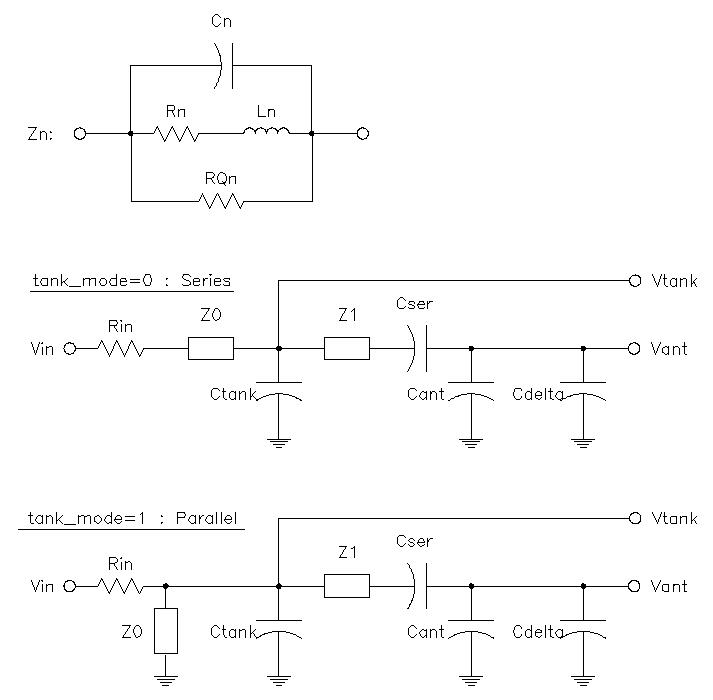In order to more intelligently select coils, I've been simulating the AFE again and thought I would share some thoughts here. A picture from the simulation spreadsheet:

tank_mode=0 is how my AFE is currently operating, where the tank inductor is in series with the tank capacitor, and the oscillator drive looks like a voltage source. The oscillator sense point is different than the drive point, the sense voltage lags the drive voltage by 90 degrees at resonance.
tank_mode=1 is how most Theremins operate, where the tank inductor is in parallel with the tank capacitor, and the oscillator drive looks like a current source. The oscillator sense point is the same as the drive point, so these voltages are in phase at resonance.
TANK_MODE=0
Pros: Tank acts like a low pass filter so tuning is completely non-critical and fixed value components can be employed. Antenna voltage swing is easily adjusted via the drive resistor. Resonance condition is quite clear if the tank and equalization inductances are roughly the same value. Resonance always coincides with maximum antenna voltage swing.
Cons: For highest sensitivity the tank capacitance must be minimized, so the tank inductance must be rather large. Operates at a lower frequencies, which could be an issue with audio heterodyning.
Other: Quadrature drive is more complex, but resonance is clearly defined.
TANK_MODE=1
Pros: Tank capacitance can be quite large without negatively impacting sensitivity, so the tank inductance can be made quite small. Operates at higher frequencies, which is generally good for audio heterodyning.
Cons: Tank acts like a bandpass filter, producing two resonance peaks (tank LC / EQ & antenna|hand LC) that interact and require critical tuning, so one or more variable components must be employed. If mistuned the maximum antenna voltage swing will not be realized.
Other: In-phase drive is simple, but resonance is not as clearly defined.
If all you have access to is small value air core coils, I believe you're pretty much forced into using mode 1. But mode 1 generally has three interacting tuned circuits: tank LC, EQ|antenna LC, fixed oscillator LC - which can make it a bear to tune. And without test equipment of some sort you won't know if you have maximum antenna voltage swing.
The simple resonance of mode 0 is a huge plus IMO because the interacting tuned circuit count is reduced to two, and it always gives you maximum antenna voltage swing.
Sorry, my intention with this post was not to rag on mode 1, I mainly wanted to point out the strengths and weaknesses of both approaches. And I haven't made an analog Theremin with mode 0 so there could landmines out there I'm unaware of.




